Influence of NaCl Solution External Erosion on Corrosion Resistance of RPC Reinforced with Straw Fiber
Abstract
:1. Introduction
2. Experimental
2.1. Raw Materials and Mix Proportion
2.2. Specimens Preparation
2.3. Dry–Wet Alternations and Freeze–Thaw Cycles
2.4. Measurement Method
2.4.1. Measurement of Ultrasonic Velocity
2.4.2. Measurement of Mass Loss and Electrical Parameter Measurement
3. Results and Discussions
3.1. Mass Change of RPC Reinforced with Straw Fiber
3.2. Ultrasonic Velocity of RPC Reinforced with Straw Fiber
3.3. Electrical Resistance of RPC Reinforced with Straw Fiber
3.4. Electrochemical Corrosion of RPC Reinforced with Straw Fiber
3.4.1. AC Impedance Spectrum
3.4.2. Tafel Curve
4. Conclusions
Author Contributions
Funding
Institutional Review Board Statement
Informed Consent Statement
Data Availability Statement
Conflicts of Interest
References
- Ling, L. Corrosion rate control method of concrete filled steel tubes structure of coastal highway bridges. J. Coast. Res. 2019, 93, 929–934. [Google Scholar] [CrossRef]
- Yusuke, K.; Masaki, M.; Ryuji, N. Verification test of restoration effect of offshore concrete structure using permanent formwork panels and underwater inseparable mortar. Int. J. Civ. Eng. 2021, 19, 1111–1124. [Google Scholar] [CrossRef]
- Peng, R.; Qiu, W.; Teng, F. Investigation on seawater freeze-thaw damage deterioration of marine concrete structures in cold regions from multi-scale. Ocean Eng. 2022, 248, 110867. [Google Scholar] [CrossRef]
- Guo, A.; Yuan, W.; Li, H.; Li, H. Structural strength deterioration of coastal bridge piers considering non-uniform corrosion in marine environments. Earthq. Eng. Eng. Vib. 2018, 17, 429–444. [Google Scholar] [CrossRef]
- Yokota, H.; Kato, E.; Iwanami, M. Chloride-induced corrosion of reinforcement and its effect on performance of structures. Int. J. Model. Ident. Control. 2009, 7, 179–184. [Google Scholar] [CrossRef]
- Wang, H.; Jin, K.; Zhang, A.; Zhang, L.; Han, Y.; Liu, J.; Shi, F.; Feng, L. External erosion of sodium chloride on the degradation of self-sensing and mechanical properties of aligned stainless steel fiber reinforced reactive powder concrete. Constr. Build. Mater. 2021, 287, 123028. [Google Scholar] [CrossRef]
- Liu, X.; Song, R.; Liu, J. Mix Proportion Design and Experimental Study of Reactive Powder Concretes. Railw. Constr. Technol. 2022, 355, 78–82. [Google Scholar]
- Ambika, D.; Nandhini, V.; Santha Rubini, V.; Poovizhi, D.; Dhinu Priya, S. An exploration on the durability properties of reactive powder concrete. Mater. Today Proc. 2021, 45, 529–534. [Google Scholar] [CrossRef]
- Peng, X.; Yang, Q.; Cao, H.; Wang, H. Mathematical Model for Early-Aged UHPFRC Compressive Strength Changes. Coatings 2023, 13, 525. [Google Scholar] [CrossRef]
- Hao, X.; Li, H.; Li, H.; Liu, Y.; Qiao, Q. Mix proportion experimental research and calculation of reactive powder concrete. Concrete 2018, 3, 156–160. [Google Scholar] [CrossRef]
- Wang, Y.; An, M.; Yu, Y.; Han, S.; Ji, W. Durability of reactive powder concrete under chloride-salt freeze–thaw cycling. Mater. Struct. 2017, 50, 18. [Google Scholar] [CrossRef]
- Mao, X.; Qu, W.; Zhu, P.; Xiao, J. Influence of recycled powder on chloride penetration resistance of green reactive powder concrete. Constr. Build. Mater. 2020, 251, 119049. [Google Scholar] [CrossRef]
- Peng, X.; Shi, F.; Yang, J.; Yang, Q.; Wang, H.; Zhang, J. Modification of construction waste derived recycled aggregate via CO2 curing to enhance corrosive freeze-thaw durability of concrete. J. Cleaner. Prod. 2023, 405, 137016. [Google Scholar] [CrossRef]
- Liu, J.; Song, S.; Wang, L. Durability and micro-structure of reactive powder concrete. J. Wuhan Univ. Technol. Mater. Sci. Ed. 2009, 24, 1000–2413. [Google Scholar] [CrossRef]
- Xiao, L.; Lei, T. Research status of straw fiber reinforced cement-based composites. Mod. Chem. Ind. 2022, 42, 106466. [Google Scholar] [CrossRef]
- Liu, Q.; Zhao, Z.; Shi, J. Present Status of Application of Straw Resources in Concrete. North Archit. 2018, 3, 71–73. [Google Scholar]
- Li, L.; Chen, H.; Ji, W.; Zhou, C. Study on the Physical and Chemical Properties of Several Straw Fiber. Soybean Sci. 2014, 33, 691–696. [Google Scholar]
- Fan, J.; Liu, F.; Liu, Y.; Hu, Y. Experimental Study on Intension and Thermal Insulation Performance of Stalk Fibre Concrete Block. Build. Sci. 2010, 26, 45–47. [Google Scholar] [CrossRef]
- Joseph, S.; Mohammed, S.; Su, T.; Sofiane, A. The effect of a polyacrylic acid viscosity modifying agent on the mechanical, thermal and transport properties of hemp and rapeseed straw concrete. Constr. Build. Mater. 2020, 235, 117536. [Google Scholar] [CrossRef]
- Deng, H.; Tian, Y.; Zhang, Z.; Li, C. Research and Application Progress of Straw Fiber Concrete. China Concr. Cem. Prod. 2023, 4, 59–62. [Google Scholar] [CrossRef]
- Bao, J.; Wei, J.; Zhang, P.; Li, S.; Zhao, T. Research Progress of Similarity of Resistance to Chloride Ingress into Concrete Exposed to Marine Environment. J. Chin. Ceram. Soc. 2020, 48, 689–704. [Google Scholar] [CrossRef]
- Bahari, I.; Sumarni, S.; Murtiono, E.S. Mechanical property of straw concrete brick with additives viscocrete. AIP Conf. Proc. 2019, 2114, 030017. [Google Scholar] [CrossRef]
- Sun, D.; Cao, Z.; Huang, C.; Wu, K.; Schutter, G.D.; Zhang, L. Degradation of concrete in marine environment under coupled chloride and sulfate attack: A numerical and experimental study. Case Stud. Constr. Mater. 2022, 17, e01218. [Google Scholar] [CrossRef]
- Li, L.; Liu, Q. Numerical Analysis on Freezing Rate and Chloride Transport in Concrete Subjected to Freeze–Thaw Cycles. J. Chin. Ceram. Soc. 2022, 50, 2245–2256. [Google Scholar] [CrossRef]
- Wang, H.; Shi, F.; Shen, J.; Zhang, A.; Zhang, L.; Huang, H.; Liu, J.; Jin, K.; Feng, L.; Tang, Z. Research on the self-sensing and mechanical properties of aligned stainless steel fiber reinforced reactive powder concrete. Cem. Concr. Compos. 2021, 119, 104001. [Google Scholar] [CrossRef]
- Li, J.; Xu, Y.; Tian, Z.; Ma, J.; Jing, P.; Song, Z. Study on leaching damage mechanism of calcium ions of reactive powder concrete (RPC) under ion corrosion. Constr. Build. Mater. 2021, 269, 121303. [Google Scholar] [CrossRef]
- Yang, W.; Pu, Y.; Zhou, Y.; Liu, K.; Chen, K. The application of density measurement method in the analysis of silicate cement hydration process. Phys. Test. Chem. Anal. A Phys. Test. 2022, 58, 22–26. [Google Scholar] [CrossRef]
- Wang, D.; Ma, Y.; Kang, M.; Ju, Y.; Zeng, C. Durability of reactive powder concrete containing mineral admixtures in seawater erosion environment. Constr. Build. Mater. 2021, 306, 124863. [Google Scholar] [CrossRef]
- Mehta, P.K. Mechanism of sulfate attack on portland cement concrete—Another look. Cem. Concr. Res. 1983, 13, 401–406. [Google Scholar] [CrossRef]
- Ming, X.; Li, Y.; Liu, Q.; Wang, M.; Cai, Y.; Chen, B.; Li, Z. Chloride binding behaviors and early age hydration of tricalcium aluminate in chloride-containing solutions. Cem. Concr. Compos. 2023, 137, 104928. [Google Scholar] [CrossRef]
- Yan, Z.; Liu, L.; Sun, J.; Lu, B.; Zu, H.; Zang, J.; Li, D.; Hou, G. Synergistic Effect of Tricalcium Aluminate and Calcium Carbonate on Early Mechanical Strength and Setting Time of Portland Cement. Bull. Chin. Ceram. Soc. 2021, 40, 1470–1476. [Google Scholar] [CrossRef]
- Lu, X.; Dai, Y.; Chen, J. The description model of fiber dispersion for wheat straw high density polyethylene (HDPE) composites. Biot. Resour. 2020, 42, 109–116. [Google Scholar] [CrossRef]
- Wang, Z.; Yao, Y.; Wang, L. Deformation and Deterioration Analysis of Concrete Exposed to Freeze-Thaw Cycles and Chloride Salt Attack. J. Chin. Ceram. Soc. 2012, 40, 1133–1138. [Google Scholar] [CrossRef]
- Yim, H.J.; Bae, Y.H.; Jun, Y. Hydration and microstructural characterization of early-age cement paste with ultrasonic wave velocity and electrical resistance measurements. Constr. Build. Mater. 2021, 303, 124508. [Google Scholar] [CrossRef]
- Chen, T.; Wang, W.; Wang, H. Mechanical properties and ultrasonic velocity of lightweight aggregate concrete containing mineral powder materials. Constr. Build. Mater. 2020, 258, 119550. [Google Scholar] [CrossRef]
- Liu, M. Application of the ultrasonic method to detect the compactness of concrete. China Build. Mater. Technol. 2015, 24, 20–22. [Google Scholar] [CrossRef]
- Yan, W.; Wu, Z.; Niu, F.; Wan, T.; Zheng, H. Study on the service life prediction of freeze–thaw damaged concrete with high permeability and inorganic crystal waterproof agent additions based on ultrasonic velocity. Constr. Build. Mater. 2020, 259, 120405. [Google Scholar] [CrossRef]
- Qiu, W.; Teng, F.; Pan, S. Damage constitutive model of concrete under repeated load after seawater freeze-thaw cycles. Constr. Build. Mater. 2020, 236, 117560. [Google Scholar] [CrossRef]
- Cheng, X.; Tian, W.; Gao, J.; Guo, J.; Wang, X. Grey entropy analysis of strength and void structure of carbon nanotubes concrete under the coupling of sulfate attack and freeze-thaw cycles. Constr. Build. Mater. 2022, 358, 129462. [Google Scholar] [CrossRef]
- Li, H.; Xie, Y.; Yi, Z.; Tan, Y.; Feng, Z.; Fang, B.; Yang, L. Advance in research on electrical resistivity of concrete. Concrete 2011, 260, 35–40. [Google Scholar]
- Niu, W.; Xu, Q.; Zhang, K.; Ma, R.; Peng, D. Experimental research on the influencing factors of concrete surface resistivity. New Build. Mater. 2021, 48, 22–26. [Google Scholar] [CrossRef]
- Shi, S.; Xu, F.; Li, Q. Experimental Study on Mechanical Properties of Ultra high Ductility Fiber-reinforced Cementitious Composites under Freeze-thaw Cycling. Sci. Technol. Eng. 2023, 23, 4745–4754. [Google Scholar] [CrossRef]
- Yang, Q.; Sun, Y.; Peng, X. Experimental Study on Mechanical Properties of Concrete at Super-Early Age. Materials. 2022, 15, 7582. [Google Scholar] [CrossRef]
- Liu, X.; Yan, Z.; Wang, D.; Zhao, R.; Niu, D.; Wang, Y. Corrosion cracking behavior of reinforced concrete under freeze-thaw cycles. J. Build. Eng. 2023, 64, 105610. [Google Scholar] [CrossRef]
- Wang, H.; Zhang, B.; Wang, Q. Study on the durability of recycled concrete under the coupling action of freeze-thaw cycles and compound salt erosion. Concrete 2023, 402, 40–44+50. [Google Scholar] [CrossRef]
- He, B.; Chen, Q.; He, L.; Song, F.; Jiang, Z. Alternating Current Impedance Characteristics and Its Equivalent Circuit Model of High-Impedance and Ultra-High Performance Concrete. J. Chin. Ceram. Soc. 2022, 50, 492–502. [Google Scholar] [CrossRef]
- Liang, Z.; Peng, X.; Wang, H. The Influence of Aspect Ratio of Steel Fibers on the Conductive and Mechanical Properties of Compound Cement Reactive Powder Concrete. Coatings 2023, 13, 331. [Google Scholar] [CrossRef]
- Wang, R.; He, F.; Shi, C.; Zhang, D.; Chen, C.; Dai, L. AC impedance spectroscopy of cement-based materials: Measurement and interpretation. Cem. Concr. Compos. 2022, 131, 104591. [Google Scholar] [CrossRef]
- Hu, X.; Shi, C.; Liu, X.; Zhang, J.; Schutter, G.D. A review on microstructural characterization of cement-based materials by AC impedance spectroscopy. Cem. Concr. Compos. 2019, 100, 1–14. [Google Scholar] [CrossRef]
- Rocchini, G. The evaluation of corrosion rates with the generalised inflection point method. Corros. Sci. 1999, 41, 2129. [Google Scholar] [CrossRef]
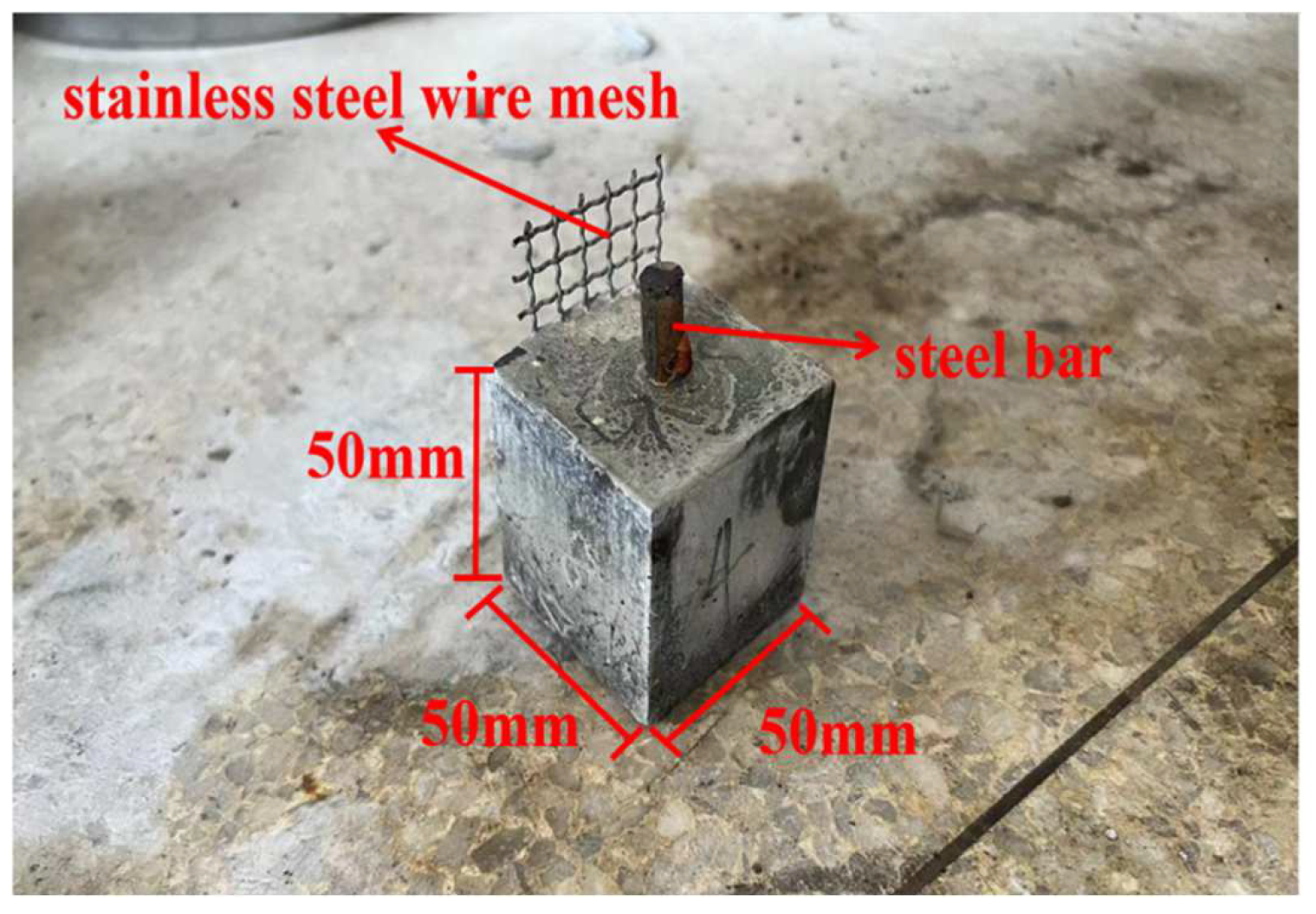


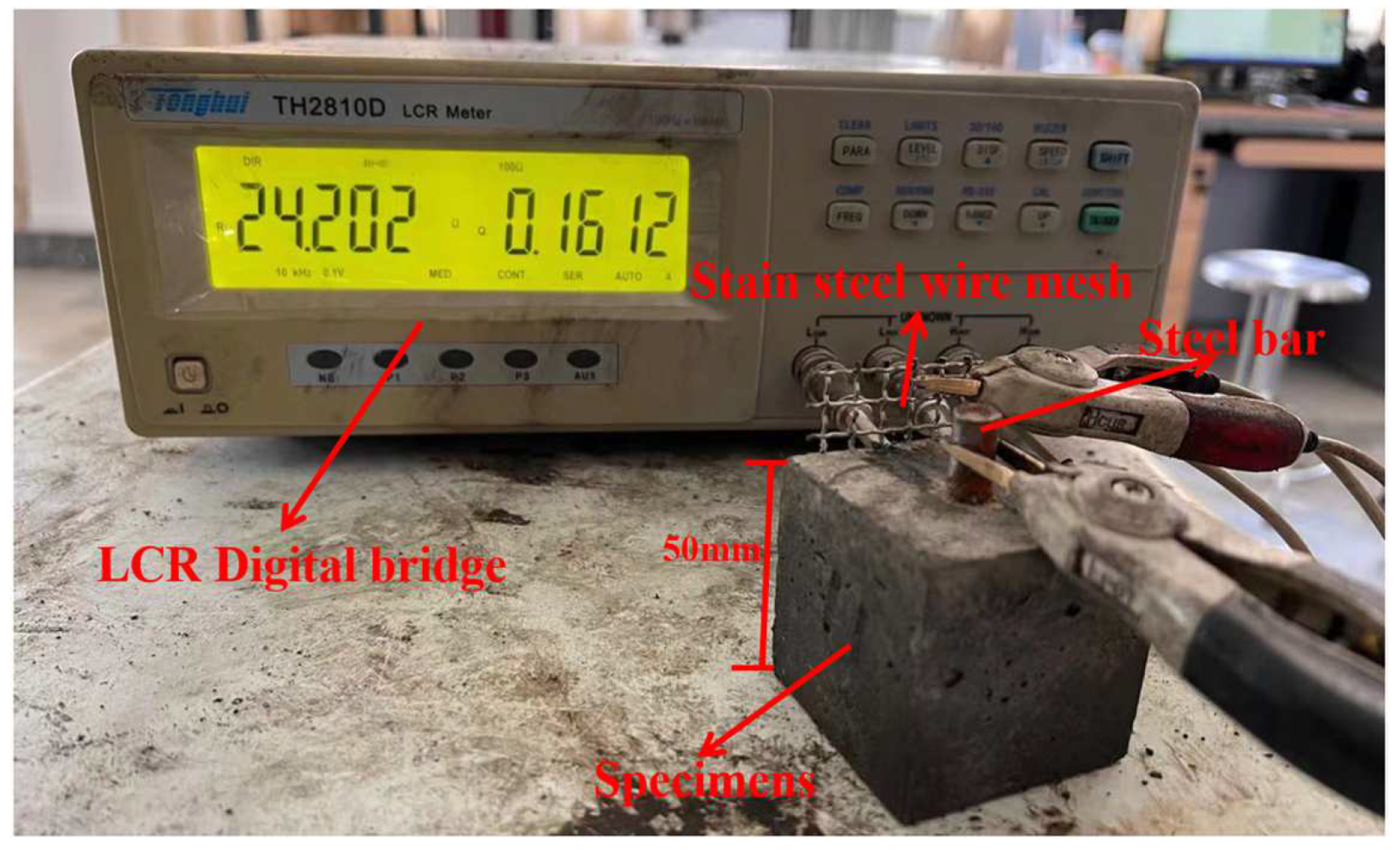
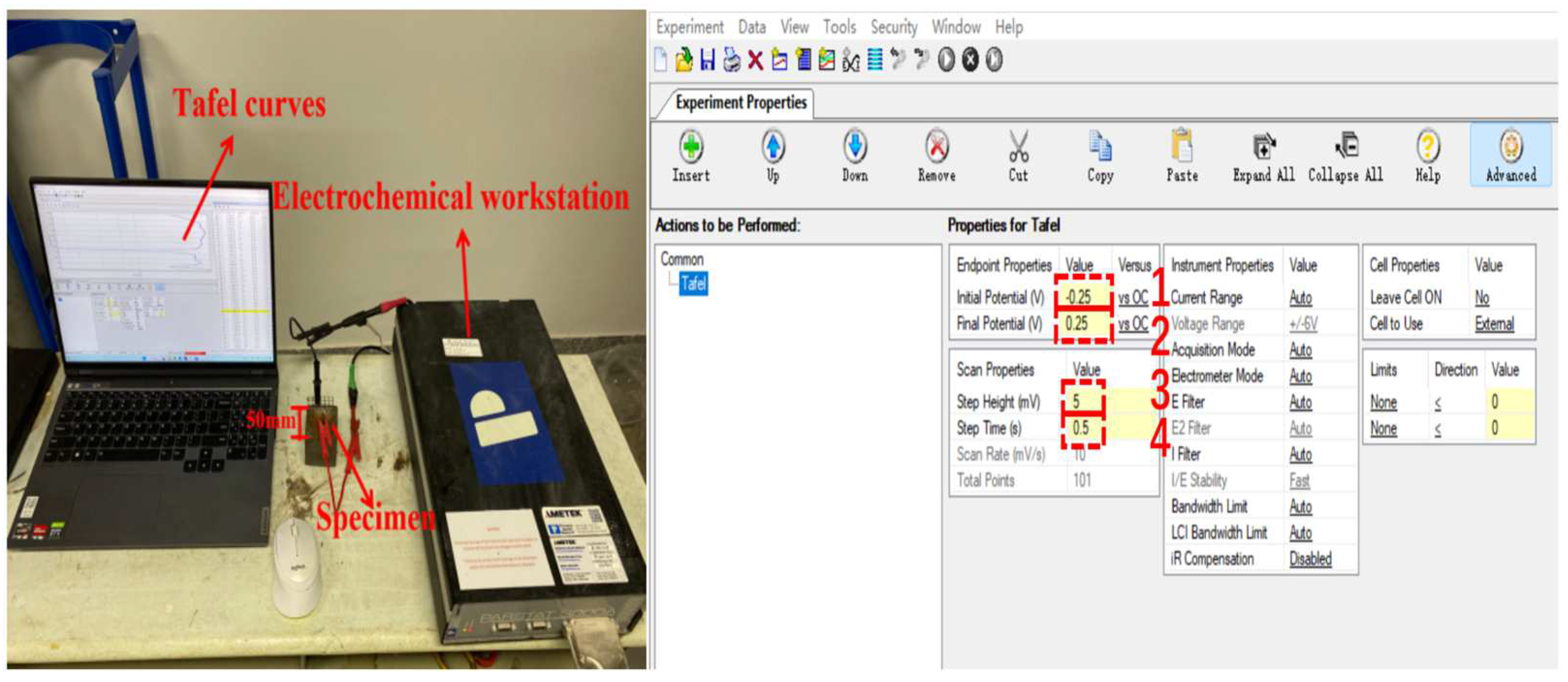
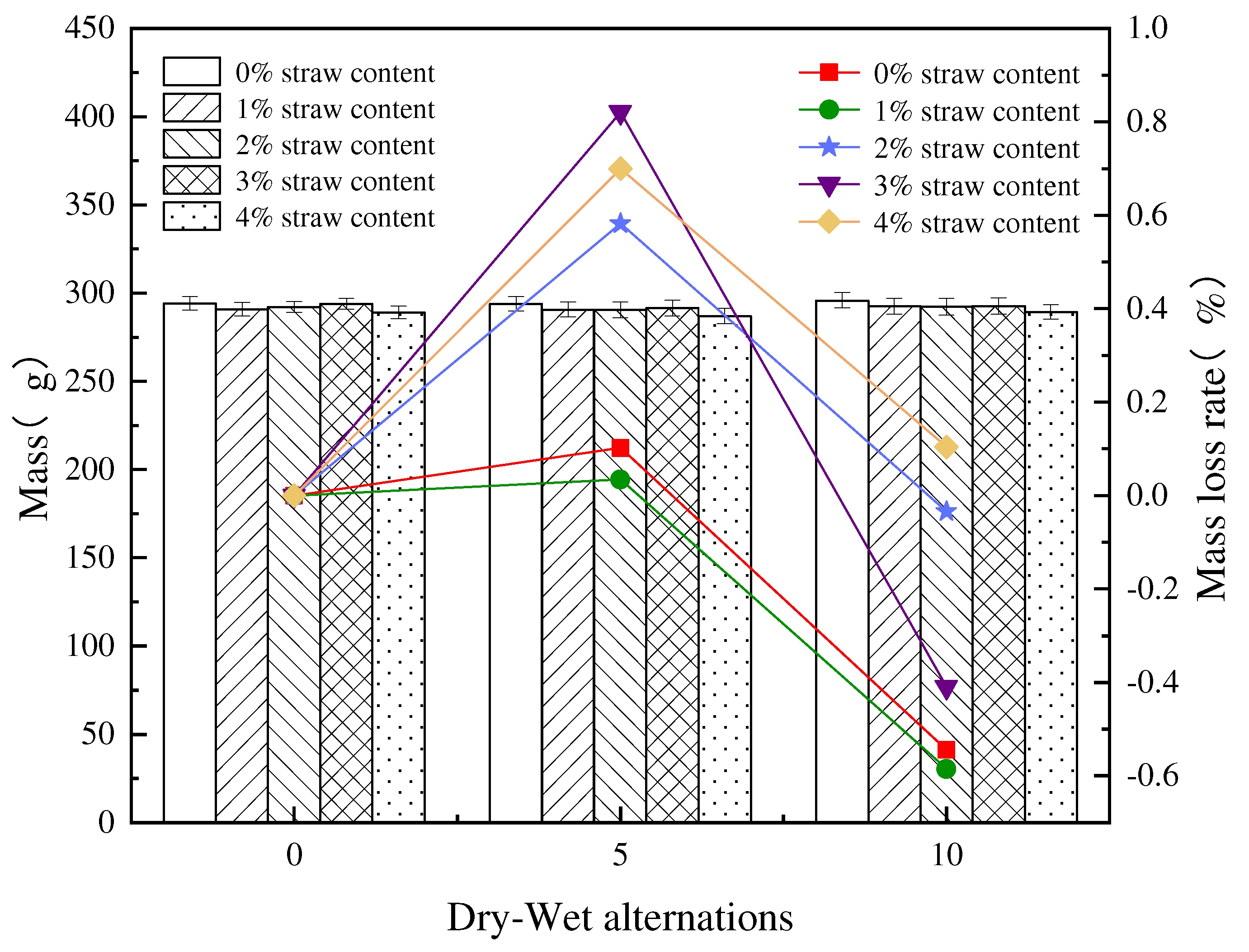
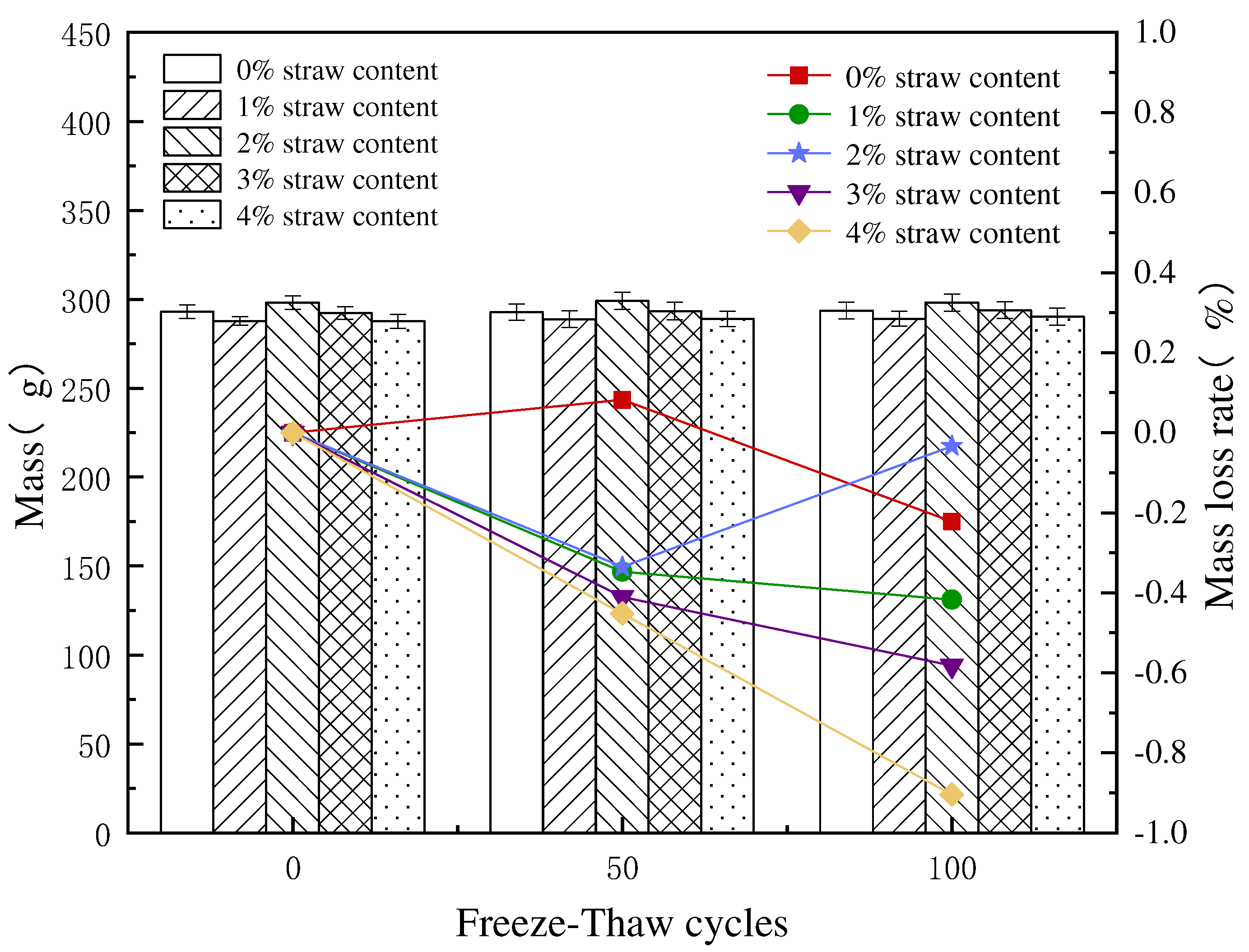
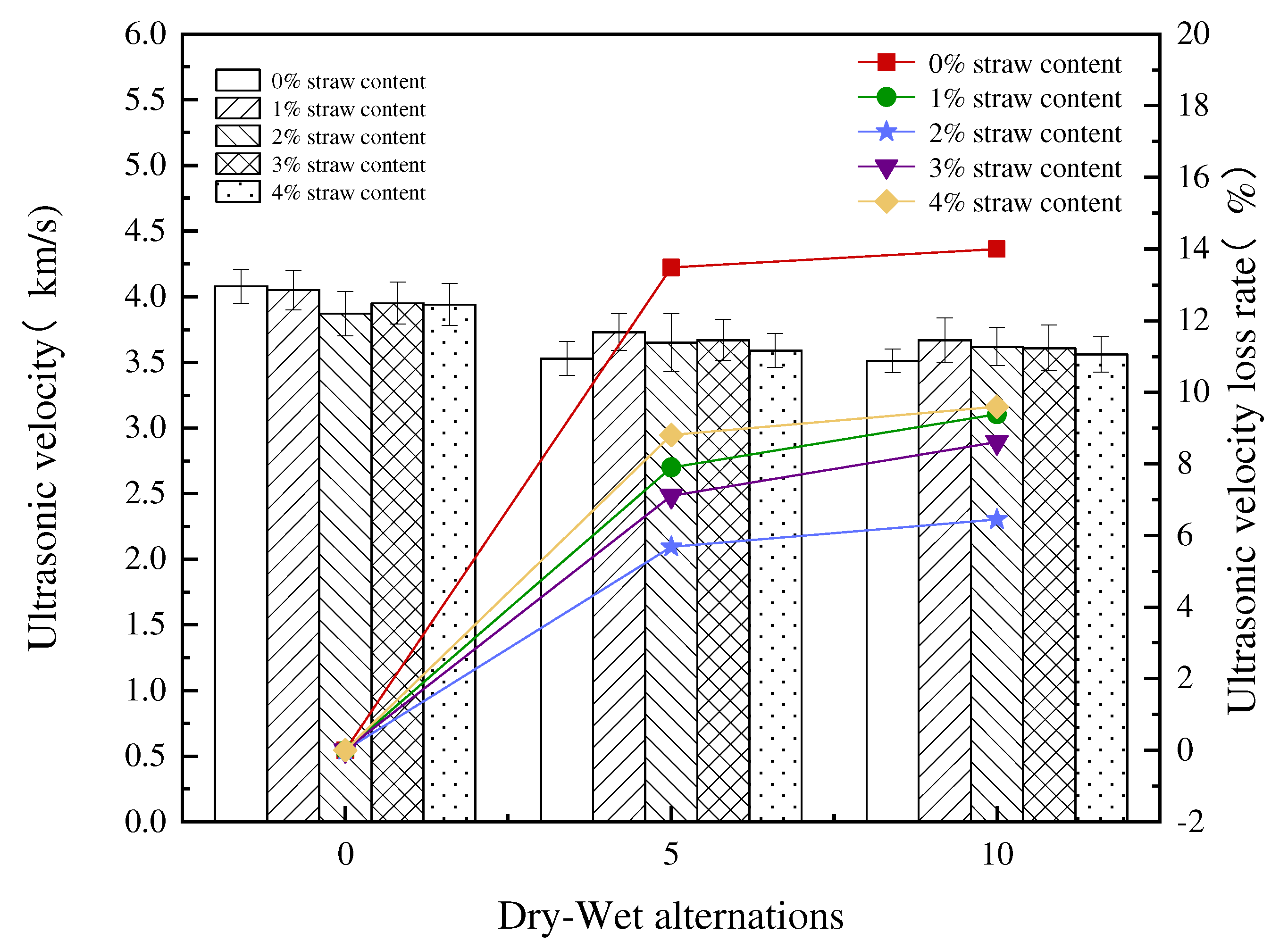

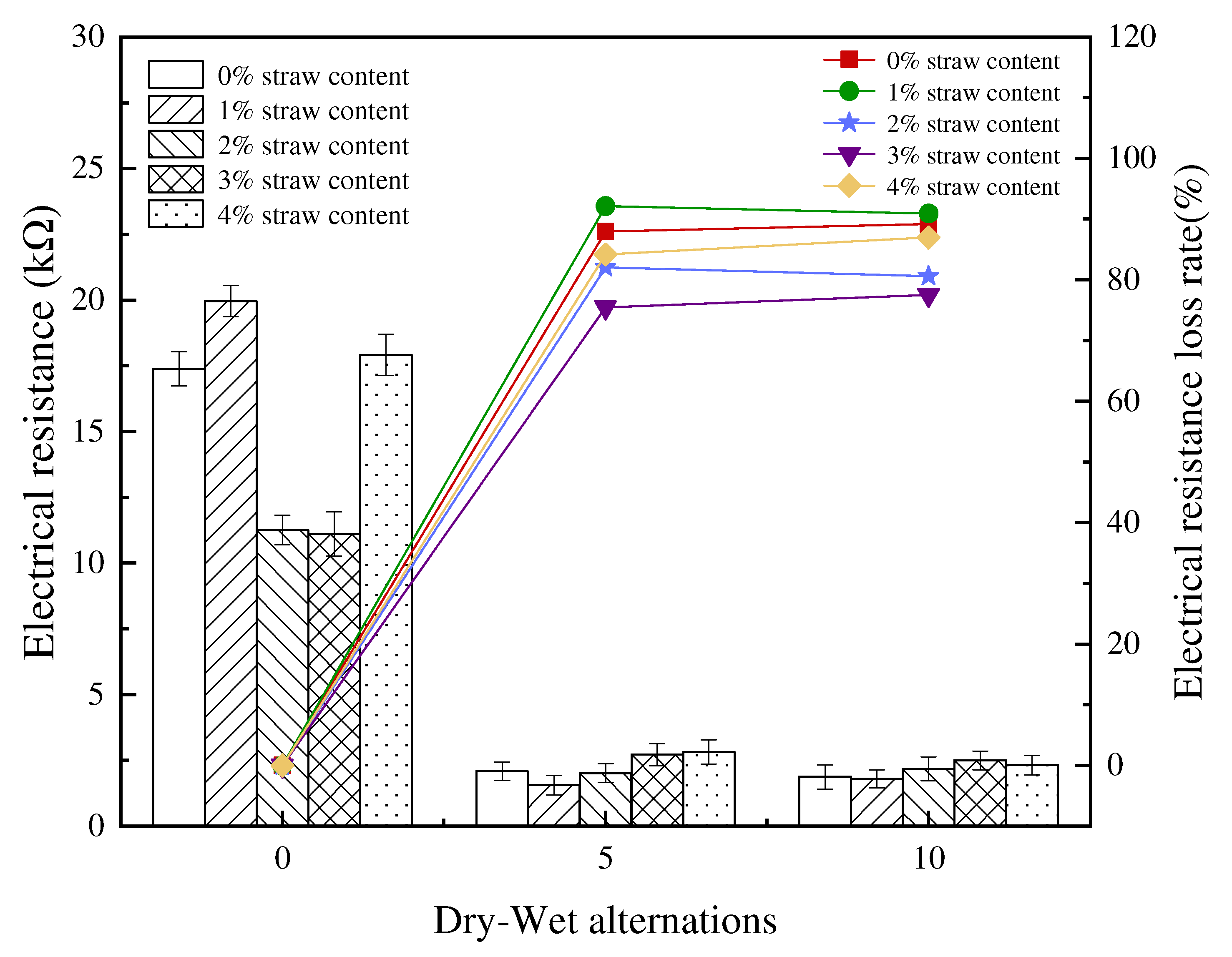
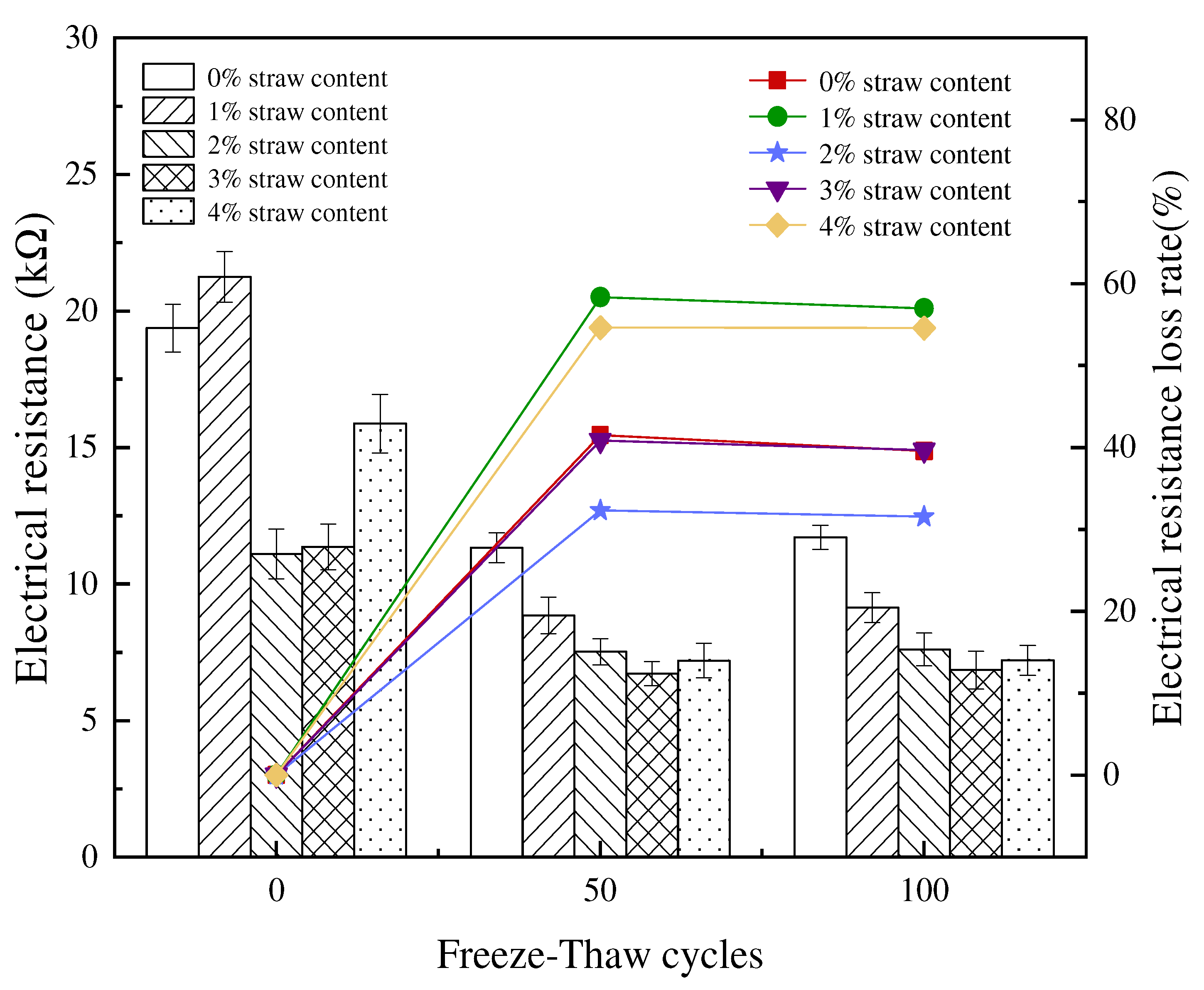


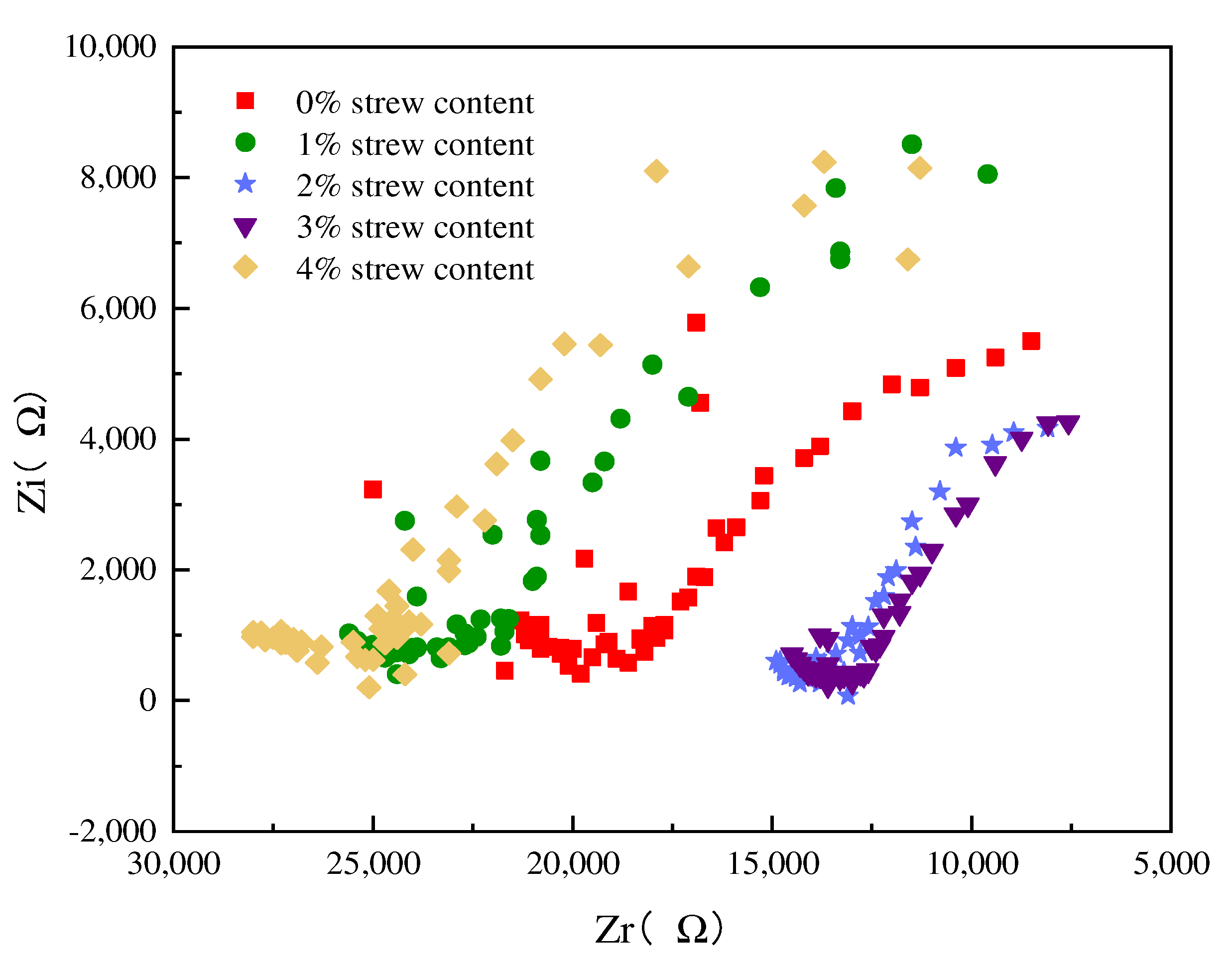

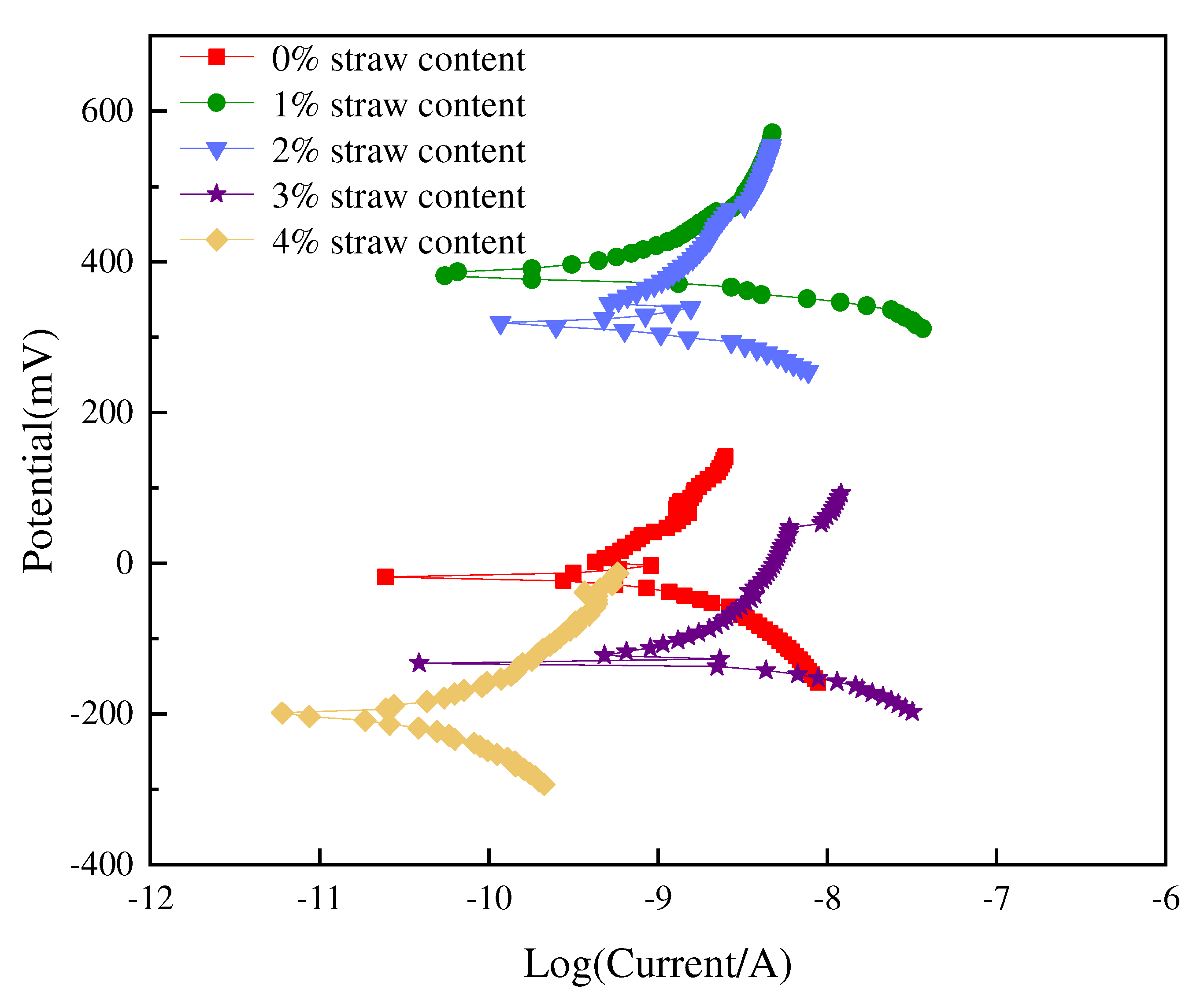
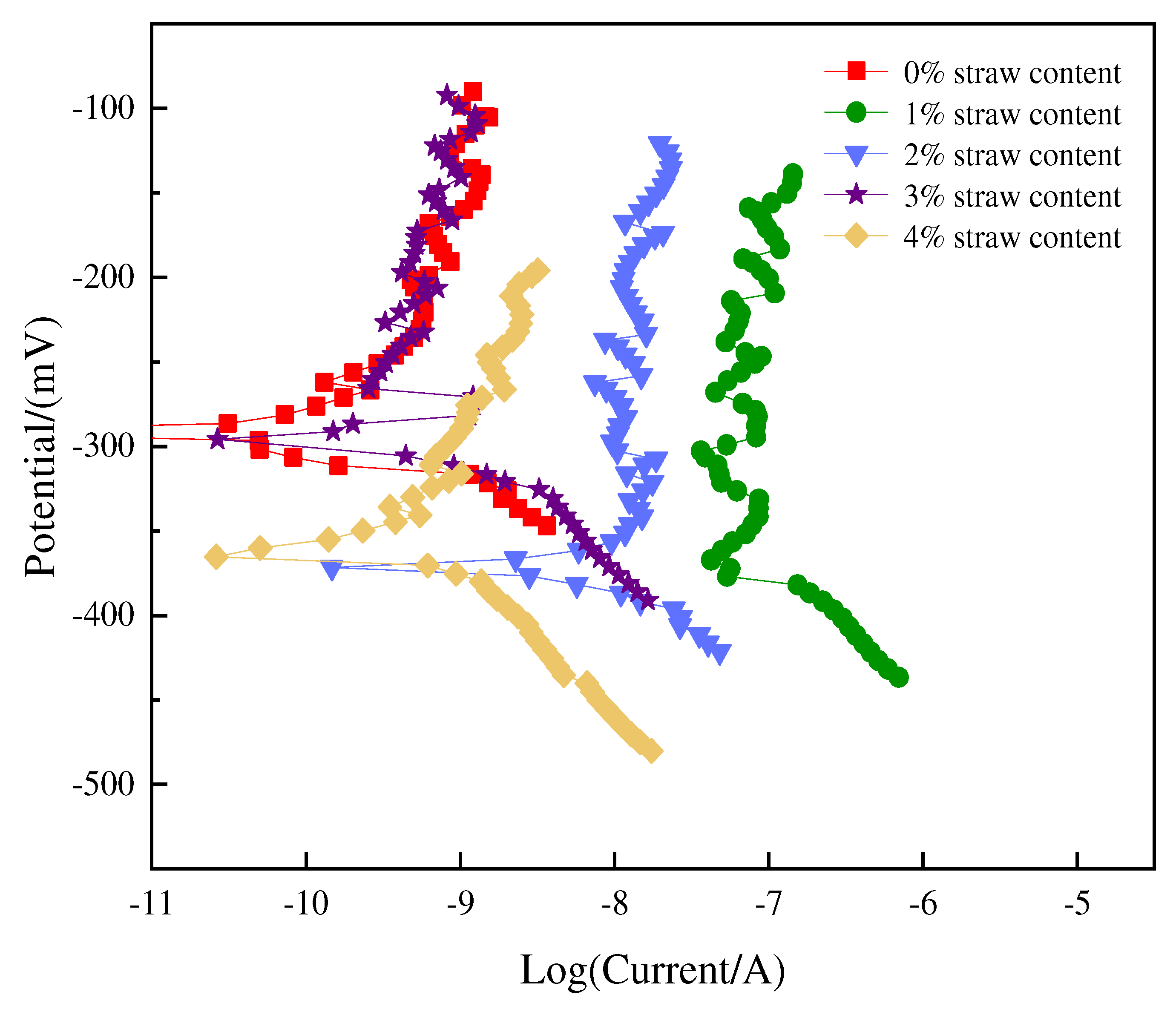
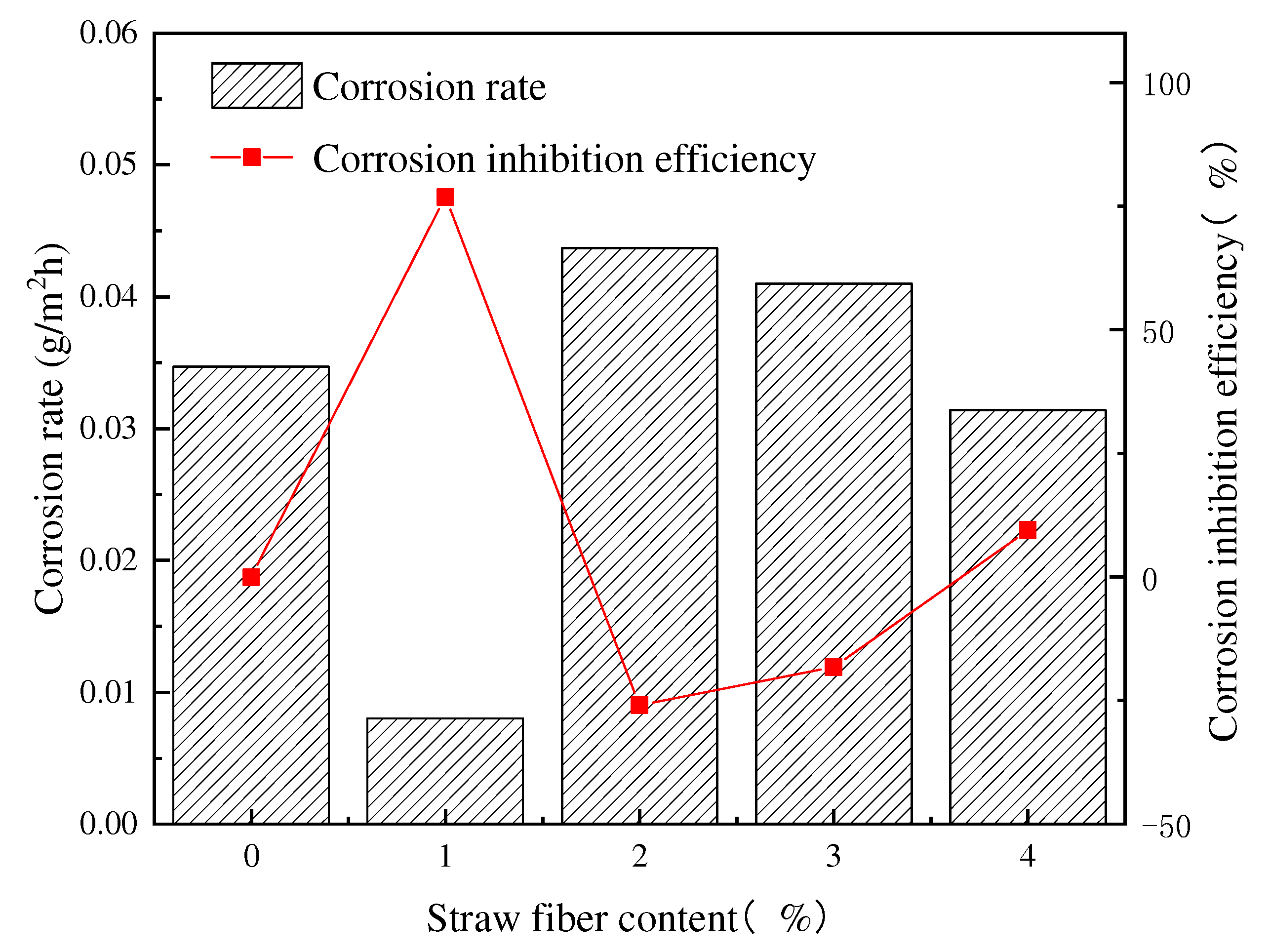
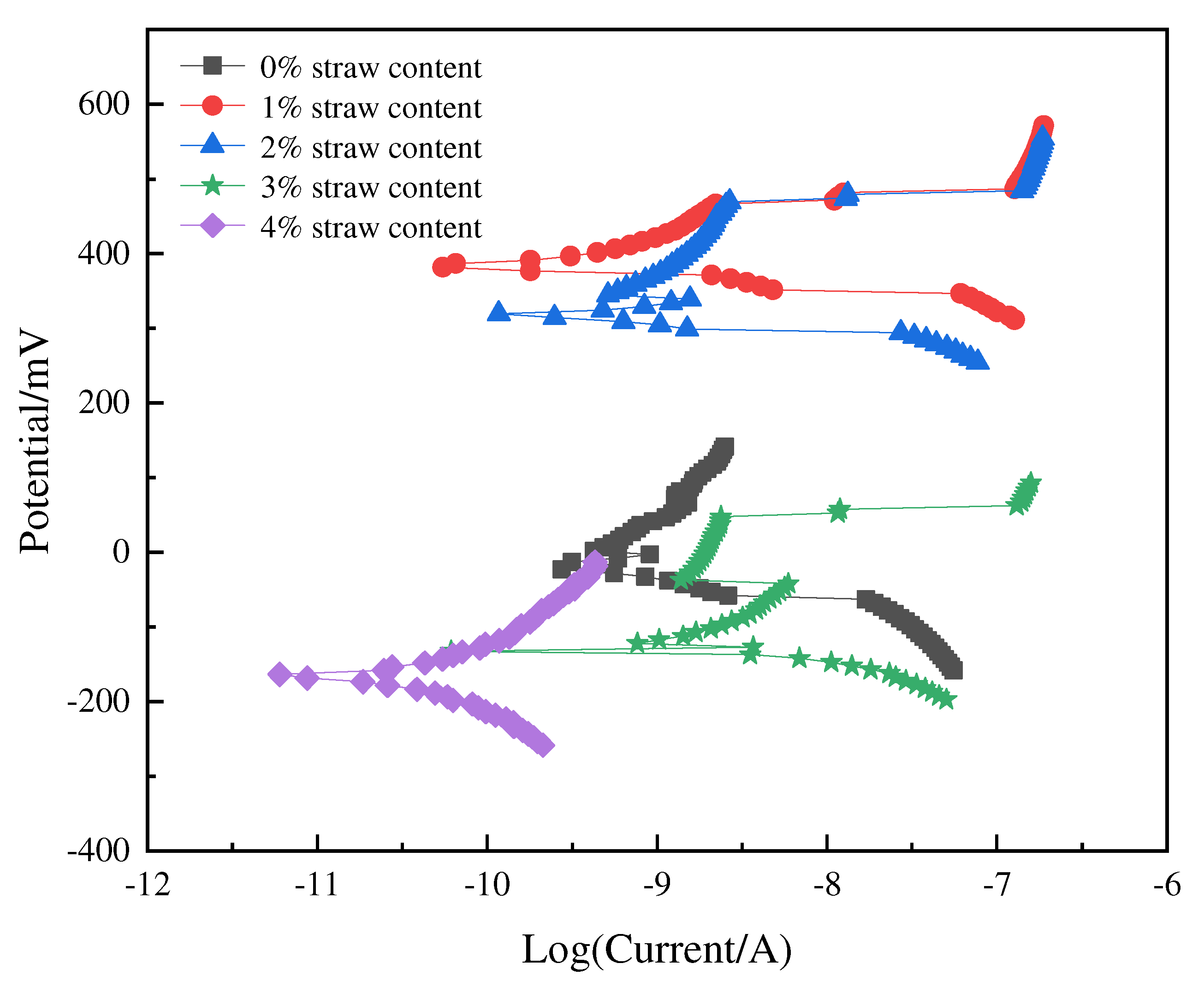
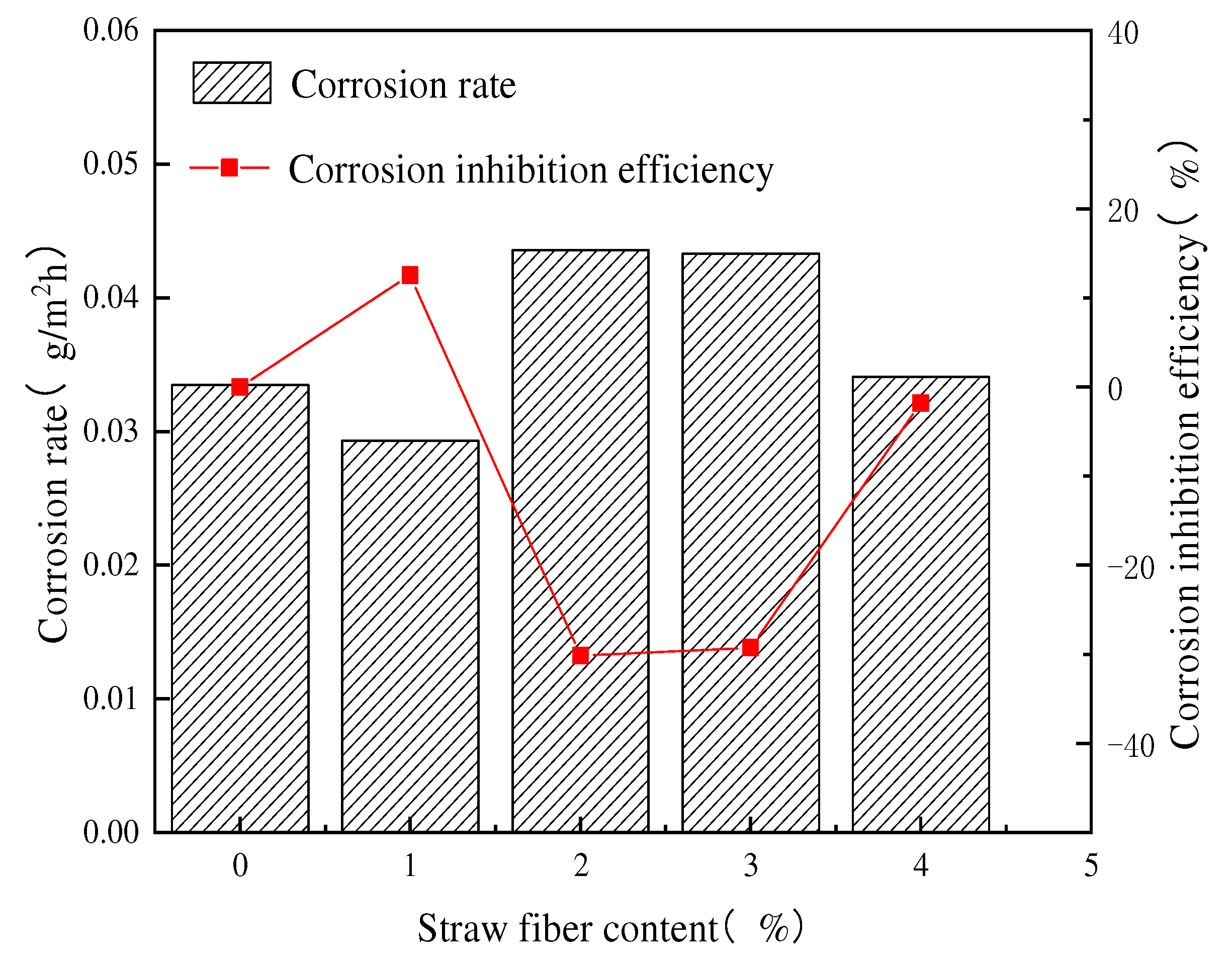
| Variety | SiO2 | Al2O3 | Fe2O3 | MgO | CaO | K2O | R2O | SO3 |
|---|---|---|---|---|---|---|---|---|
| Cement | 20.86 | 5.47 | 3.94 | 1.73 | 62.23 | 0 | 0.48 | 2.66 |
| Silica fume | 90 | 0.8 | 0.6 | 0.8 | 0.4 | 0 | 7.4 | 0 |
| Fiber Content (%) | Water/kg | Cement/kg | Quartz Sand/kg | Water-Reducing Agent/kg | The Anti-Foaming Agent/kg | Silica Fume/kg |
|---|---|---|---|---|---|---|
| 0, 1, 2, 3, 4 | 0.9375 | 2.8125 | 1.875 | 0.0375 | 0.00375 | 0.9375 |
Disclaimer/Publisher’s Note: The statements, opinions and data contained in all publications are solely those of the individual author(s) and contributor(s) and not of MDPI and/or the editor(s). MDPI and/or the editor(s) disclaim responsibility for any injury to people or property resulting from any ideas, methods, instructions or products referred to in the content. |
© 2023 by the authors. Licensee MDPI, Basel, Switzerland. This article is an open access article distributed under the terms and conditions of the Creative Commons Attribution (CC BY) license (https://creativecommons.org/licenses/by/4.0/).
Share and Cite
Cao, Z.; Wang, K.; Peng, X.; Wang, H.; Huang, R. Influence of NaCl Solution External Erosion on Corrosion Resistance of RPC Reinforced with Straw Fiber. Coatings 2023, 13, 1308. https://doi.org/10.3390/coatings13081308
Cao Z, Wang K, Peng X, Wang H, Huang R. Influence of NaCl Solution External Erosion on Corrosion Resistance of RPC Reinforced with Straw Fiber. Coatings. 2023; 13(8):1308. https://doi.org/10.3390/coatings13081308
Chicago/Turabian StyleCao, Zihao, Kewei Wang, Xi Peng, Hui Wang, and Rongming Huang. 2023. "Influence of NaCl Solution External Erosion on Corrosion Resistance of RPC Reinforced with Straw Fiber" Coatings 13, no. 8: 1308. https://doi.org/10.3390/coatings13081308
APA StyleCao, Z., Wang, K., Peng, X., Wang, H., & Huang, R. (2023). Influence of NaCl Solution External Erosion on Corrosion Resistance of RPC Reinforced with Straw Fiber. Coatings, 13(8), 1308. https://doi.org/10.3390/coatings13081308








